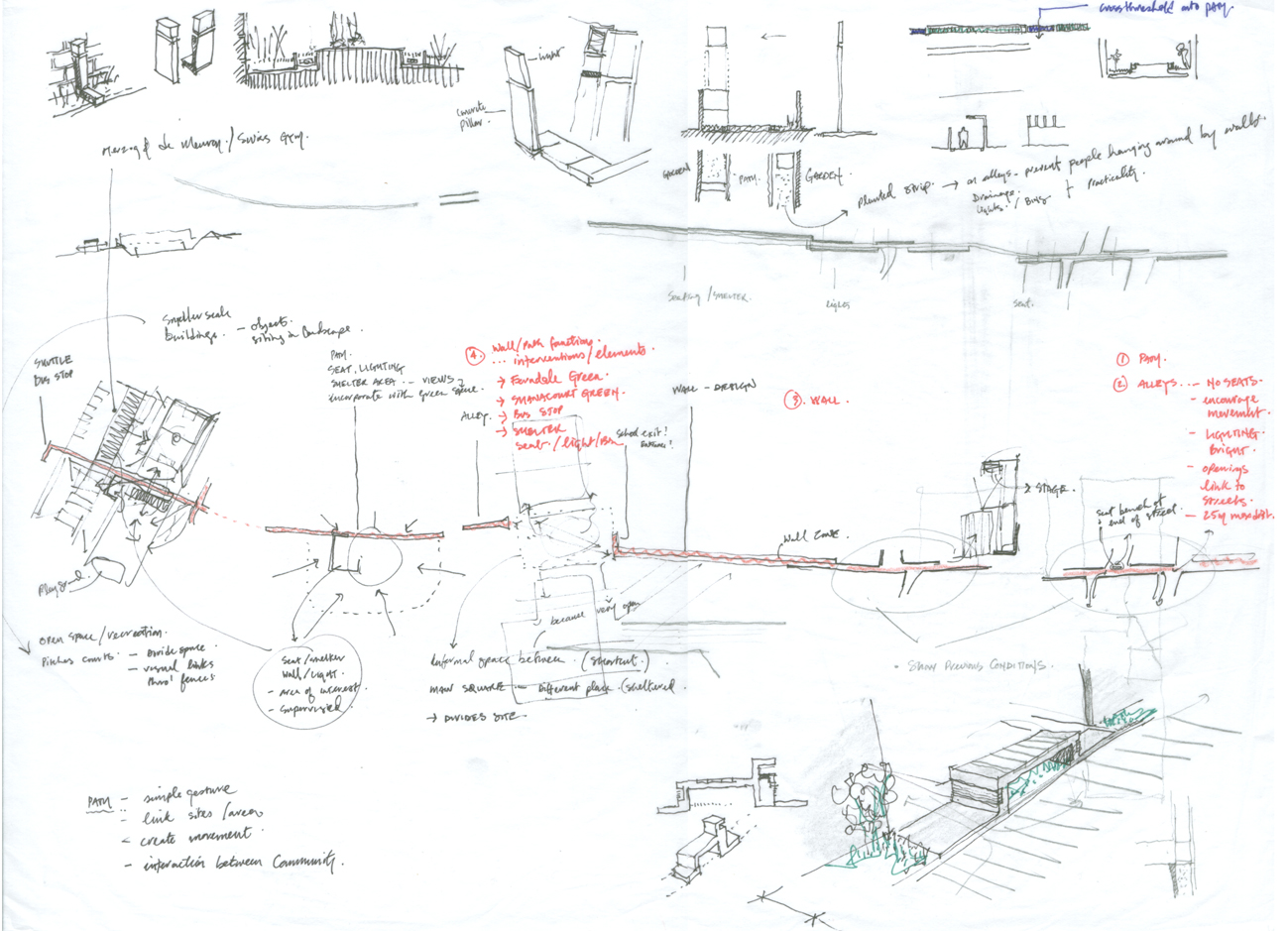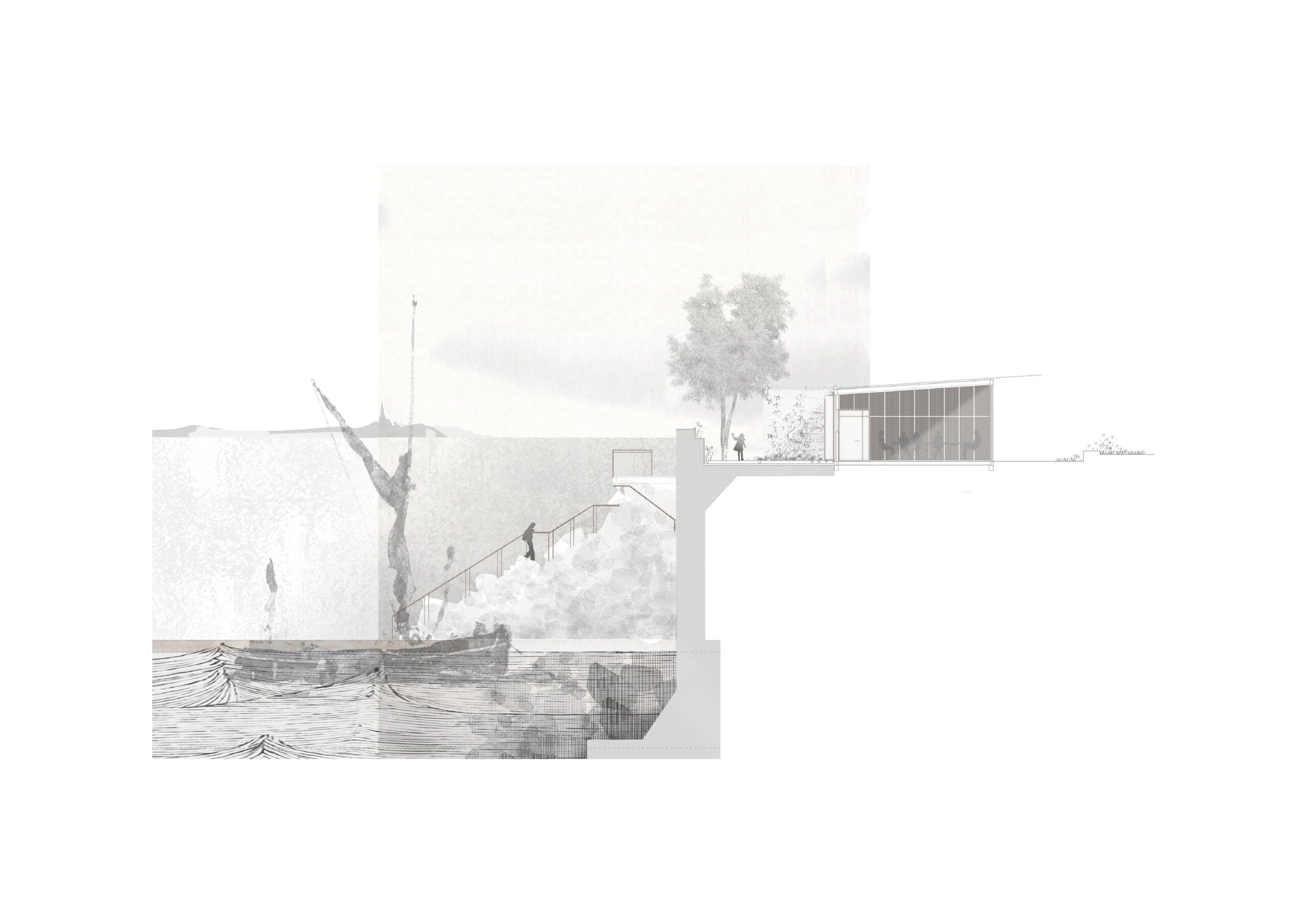Rather than starting my thesis with a preconceived building or typology in mind, I began instead by looking at the large areas of low-density residential housing, occurring on the outskirts of Wexford town. With little or no public amenities or services. I wanted to better understand what the community and area needed prior to settling on a proposal.
I proceeded to focus in on the area of Coolcotts because of its density combined with the lack of facilities, high rate of early school leaving and unemployment. Coolcotts had a population of almost 2500 people with a serious scarcity of community facilities – “Coolcotts has become a village without the necessary services and infrastructure to support the population”.
Through community engagement, surveys, interviews with residents, and local Community Groups, it became clear that one building was not enough.
My final proposal involved the insertion of a series of public buildings along an external path that incorporated additional activities and social spaces (squares, gardens, playgrounds etc.). Establishing a more connected and accessible relationship with the existing built fabric.
My concept was based on three components:
1. Path
2. Activity
3. Building
The path functioning as the organising axis for the elements by which it is accompanied. A form of ‘social acupuncture’. In the practice of acupuncture, a traditional Chinese form of medicine, the human body can be healed by the insertion of small needles at particular pressure points.
The task was to locate the ‘pressure points’ in the suburban fabric, and then through the careful insertion of community buildings, services and spaces, stitching it together to form a cohesive whole.
‘Architecture alone cannot create communities, no matter how well considered or practiced. Architecture must provide the conditions for communities to exist and grow in a healthy, diverse and inclusive way.’

